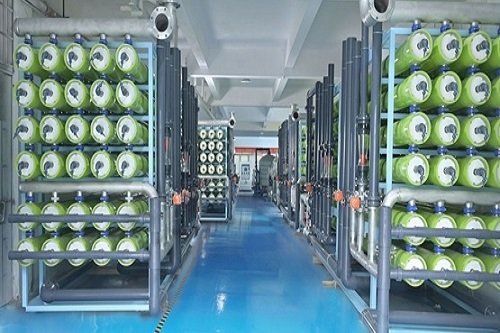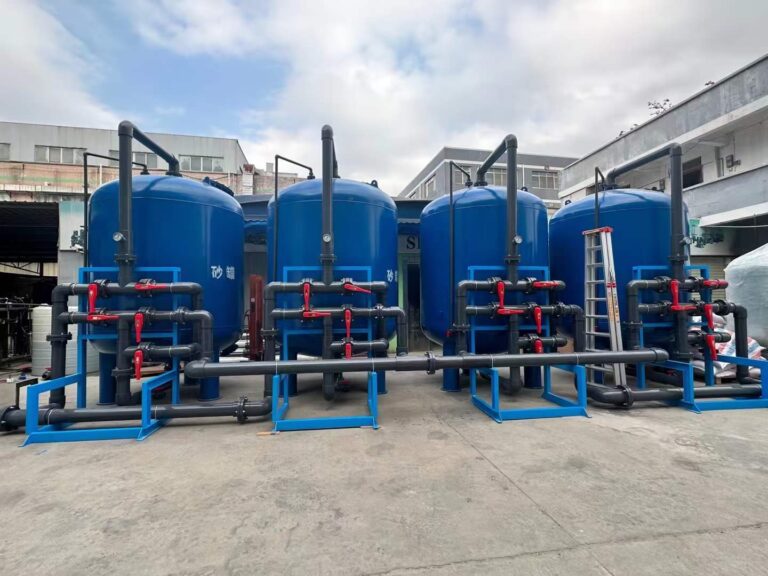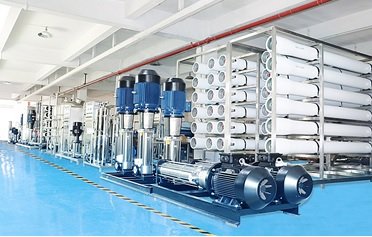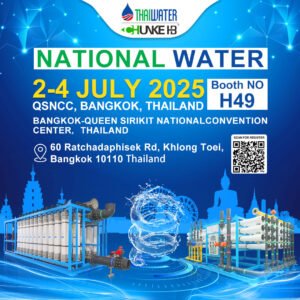
CHUNKE is Large Scale Water Purification Systems producer from China. Clean, safe and drinkable water is an indispensable resource for every industry, commercial establishment, and community. Access to purified water is of paramount importance, particularly in regions where water scarcity is a pressing issue. This article provides an in-depth look at large scale water purification systems, their different types including:
- Reverse Osmosis Systems,
- Ultrafiltration Systems,
- Electrodeionization Systems,
- Water Filtration Systems,
- SWRO Sea Water Desalination Systems,
and their crucial role in ensuring access to pure water.
1. Understanding Large Scale Water Purification Systems
Large scale water purification systems are advanced solutions designed to purify water on a large scale, serving industries, commercial establishments, and large communities. These systems integrate advanced technologies like reverse osmosis, ultrafiltration, and electrodeionization to remove impurities, such as harmful bacteria, viruses, heavy metals, and other contaminants from water, ensuring its safety for consumption and use.
1.1 The Need for Large Scale Water Purification
Water is an essential resource, and its scarcity can lead to disastrous effects on human health and economic development. In many parts of the world, access to clean, safe drinking water is a significant challenge due to the prevalence of waterborne diseases and pollutants in the water supply. Big size water purification systems play a crucial role in mitigating these challenges by providing access to purified water on a large scale.
2. Types of Large Scale Water Purification Systems
There are several types of big size water purification systems, each employing different technologies to purify water. Let’s delve into some of the most common ones:

2.1 Reverse Osmosis Systems
Reverse Osmosis (RO) Systems are one of the most effective large scale water purification systems. They use a semi-permeable membrane to remove impurities, such as salts, bacteria, viruses, and chemicals from water. RO systems are particularly effective in removing dissolved solids and are widely used in both commercial and industrial applications.
2.2 Ultrafiltration Systems
Ultrafiltration Systems work on the principle of size exclusion. These systems use a semi-permeable membrane to filter out particles, bacteria, viruses, and colloids from the water, without removing ions and low molecular weight compounds. Because of their high efficiency, ultrafiltration systems are commonly used in industries, hospitals, and large establishments.
2.3 Electrodeionization Systems
Electrodeionization (EDI) Systems combine ion exchange resins and ion-selective membranes with direct current to remove ionized species from water. EDI systems are often used as a polishing treatment to further purify water after RO filtration, making them ideal for applications that require high purity water, such as in the pharmaceutical and power industries.
2.4 Water Filtration Systems
Water Filtration Systems are the backbone of any large scale water purification process. They use mechanical filters, activated carbon filters, and other advanced filtration technologies to remove suspended solids, chlorine, volatile organic compounds, and other impurities from water.
2.5 SWRO Sea Water Desalination Systems
SWRO (Sea Water Reverse Osmosis) Systems are specially designed for sea water desalination. They use high-pressure pumps and special RO membranes to remove salt and other impurities from seawater, making it safe for consumption and use.
3. Key Components of Large Scale Water Purification Systems
Large scale water purification systems comprise several critical components, each playing a pivotal role in the purification process.
3.1 Mechanical Filters
Mechanical Filters are the first line of defense in any water purification system. They filter out suspended solids, sediments, and large particles from the water, preventing these materials from damaging the system’s pumps and membranes.
3.2 Water Softeners
Water Softeners are essential for removing hardness causing minerals, such as calcium and magnesium, from the water. Softening the water helps prevent scale buildup in the system’s pipes and equipment, enhancing the efficiency and lifespan of the system.
3.3 RO Membranes
RO Membranes are the heart of any RO system. They act as a physical barrier, allowing only water molecules to pass through and trapping contaminants, including salts, bacteria, viruses, and other impurities.
3.4 Dosing Systems
Dosing Systems are used to add chemicals to the water to aid in the purification process. These chemicals can include coagulants, disinfectants, pH adjusters, and antiscalants.

4. Applications of Large Scale Water Purification Systems
Large scale water purification systems find application in a wide array of sectors, each with its unique water purification needs.
4.1 Industrial Applications
Industries like pharmaceuticals, food and beverages, power plants, and manufacturing units require purified water for their operations. Large scale water purification systems ensure a steady supply of high-quality water for these industries.
4.2 Commercial Applications
Commercial establishments, such as hotels, restaurants, hospitals, and schools, also require purified water for their daily operations. Industrial size water purification systems can cater to these needs efficiently.
4.3 Agriculture and Farming
Agriculture and farming sectors require purified water for irrigation purposes. Big size water purification systems can help prevent the buildup of harmful minerals in the soil, improving crop yield and quality.

5. Factors to Consider When Choosing Large Scale Water Purification Systems
When choosing a large water purification system, it’s important to consider several factors to ensure the system meets your specific needs.
5.1 Water Quality
The quality of your source water affects the type of purification system you need. If your water has high levels of hardness, a system with a water softener may be necessary. If it contains high amounts of dissolved solids, a RO system would be more appropriate.
5.2 Flow Rate
The flow rate, measured in gallons per minute (GPM), indicates the volume of water the system can treat efficiently. Ensure the system’s flow rate matches your water usage requirements.
5.3 Size of the System
The size of the system should be appropriate for the space available. Large scale water purification systems can be quite large, so ensure you have enough space to accommodate the system.
5.4 Maintenance Requirements
Maintenance requirements vary between different systems. Some systems, like RO and ultrafiltration systems, require regular membrane replacements. Consider the maintenance requirements and associated costs when choosing a system.
6. Conclusion
Large scale water purification systems play a crucial role in ensuring a steady supply of purified water for various sectors. Whether it’s reverse osmosis systems, ultrafiltration systems, electrodeionization systems, water filtration systems, or SWRO sea water desalination systems, each type serves unique purification needs. By understanding your specific requirements and the features of these systems, you can choose the most suitable big size water purification system for your needs.

